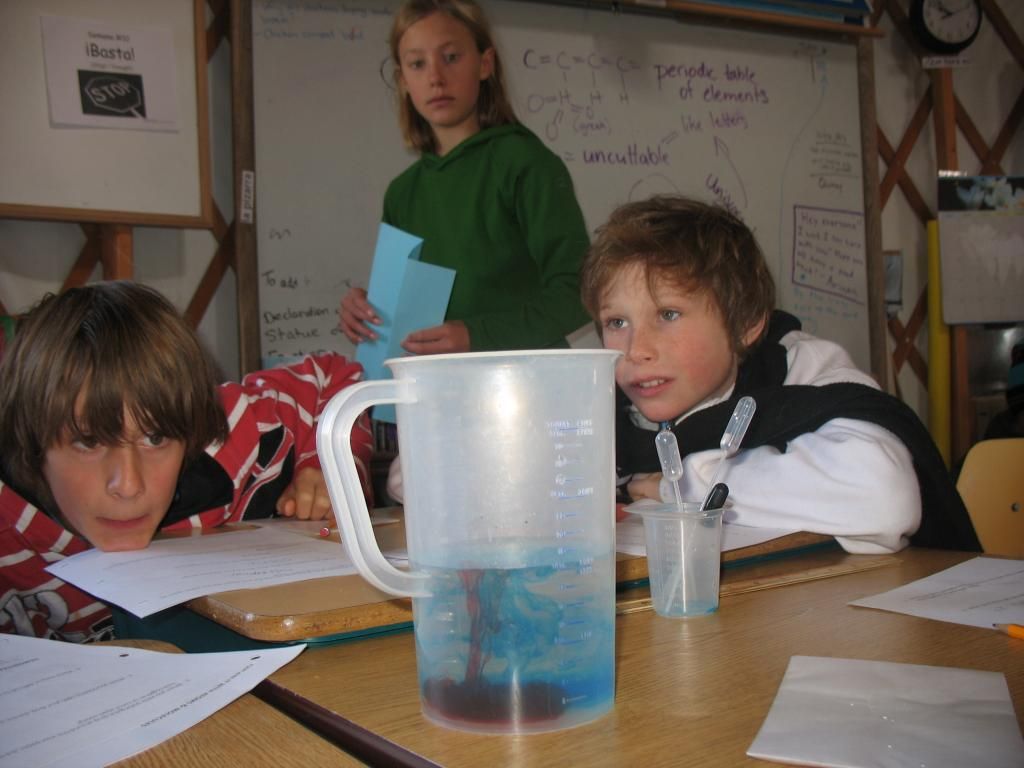


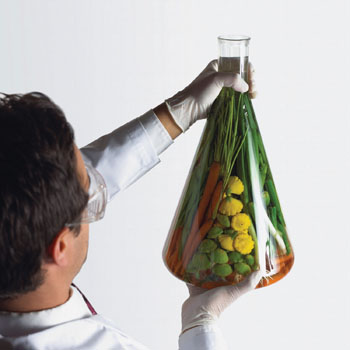
Driving Question: How can we make an interesting molecular gastronomy based cooking show that will teach people about chemistry?
Essential Questions:
What are atoms made up of? What is the difference between a barnacle and a chemical?
What is a chemical reaction? How can I use chemistry and how will it help me in my everyday life?
How does molecular gastronomy affect our daily lives? What chemical reactions are used when making molecular gastronomy?
Are there certain combinations of molecules that make up most food? How do molecules turn into food?
Why do certain chemicals explode when they interact with each other? What do taste buds do?
What is the difference between taste and smell? What molecules make food taste stronger and weaker?
What a great week to wrap up our amazing Molecular Gastronomy Project. We were able to share our scientific understanding and passion for food and chemistry through our show, "Chemistry Countdown". We started the week by practicing our scripts as well as our molecular gastronomy techniques. Throughout the week, we cooked for and presented to community judges. We choose judges with expertise in cooking and chemistry. We had a whirlwind week of prepping, cooking, studying and sharing. The Toros really impressed everyone with their level of commitment and responsibility throughout the project.
We are in the final two weeks of our molecular gastronomy project! We have set up times for our amazing community judges to come by for our culinary presentations. We are also wrapping up a few more fun experiments, concluding our understanding of the pH scale and its everyday applications. We have had the opportunity to practice the scientific process by carrying out short experiments looking at questions such as, “Is carbonated water neutral, acidic or basic?”. We have had the opportunity to practice key techniques we will need for our culinary creations. All of the Toros are working extremely hard to produce their best work for the judges. We have thought a lot about how we want to be assessed and our goals for the final presentation. To this end, the Toros worked to create a rubric specific to the cooking show by which the judges will score their work.
We are in the final stretch of our amazing Molecular Gastronomy project. We have heard back from a number of community members we have approached as judges and we are putting together the details of our script. We also built on our chemistry knowledge through a fun experiment with litmus solution. We tested the effect of litmus solution on various chemicals. We noticed a very different result when litmus solution was added to an acidic liquid compared to a non-acidic liquid. We will explore pH in more depth next week!
We have also begun to tie in our project to our morning "Caught Ya" grammar puzzles. We have started to explore the origins and timeline of some of our favorite foods. So far, we have mapped the history of pomegranates, mangoes, garlic and butter. It is a great way to build on our understanding of the scope of human history!
We continue to explore the science of cooking to help us solidify our understanding of important concepts. Ths week, we stepped back and zoomed in close to think about what is happening at the atomic level every time a chemical reaction occurs. We used plastic and balloons to experiment (and play!) with electrons. Just by applying some friction, we found we could move electrons from our body to the surface of the plastic or balloon. This added charge led to some amazing outcomes: confetti floated up to the charge surface of the balloon, and plastic stuck to our skin as if it had been glued...amazing!
The behavior of electrons and the attractive power of opposite charges forms the foundation of chemistry. We will continue to look closely at these relationships while experimentng with our recipes before filming our cooking show.
We have found nine community members who have agreed to be judges for our cooking competition! We can't wait to wow them with our cooking and chemistry prowess! This week, we worked to craft and send off professional emails to our judges that will help us get to know them a bit better. Each student will write a brief bio on a judge participating in the competition. Our cooking competition, "Chemistry Countdown", is quickly approaching. Our goal is to film the episodes during the week before spring break.
This week, we delved into researching our recipes for our show. Every student will create an appetizer and a dessert for the competition. We have been inspired by all of our culinary experiments and our field trips last week. The Toros are also carrying out research about the chemistry behind each recipe they choose or design. We brainstormed ways to carry out sound internet research and discussed the best ways to take notes from sources in our own words.
Leah Ritz, a graduate student at the Teton Science Schools, prepared a week of amazing learning experiences that directly linked to our project! Tuesday, we focused on practicing our math skills to create an equivalent conversions chart. We also carried out a few fun experiments on the science of taste. We realized that how we taste something is linked to ALL of our senses...and sometimes our brains can lead us in the wrong direction. As Quincy put it, "I bet our brains made us taste that!". Color, texture, and scent all play a pivotal role in how we experience food.
The highlight of our week was our field trips on Wednesday, when we were able to visit Spoons Bistro and The Station Grill to learn more about what it means to open and run your own restaurant. At Spoons, we were able to learn about the science and art of molecular gastronomy. Travis, head chef and owner at Spoons, walked us through the steps to put together an amazing molecular gastronomy creation. With his guidance, everyone took a turn creating a delicious treat of "apple cavier" atop "banana foam" drizzled with a bit of chocolate sauce and cinnamon. We learned expert tricks and tips for success with the complicated processes of spherification (to make "cavier") and stable foams. Travis helped us see that cooking is really just changing the chemistry of food ingredients, guided by your own inspiration, passion, and effort. This field trip really opened our eyes to the importance of EXPERIENCING food with all five senses.
On Wednesday, we were also hosted by Rich at the Station Grill. He have a "backstage" tour of the restaurant. We learned about the complexities of ordering the right amount of ingredients, the importance of using fresh ingredients, and the challenge of making a restaurant a profitable business. We had a great discussion about fresh versus processed foods. Rich walked us through the process of making chicken tenders from scratch using real chicken, flour, fresh eggs and panko. We all agreed that this chicken tender was completely different from what you might get at a fast food drive-through!
Thursday, we used what we learned from our local chef experts to design the restaurant of our dreams. The students created a business plan in their restaurant booklets and then wrote advertisements for their restaurant. They had to work out details such as pricing menu items, and thinking about the look and feel of the restaurant.
We also worked on inviting community members to be judges for our cooking show, "Chemistry Countdown". It was great practice in finding contact information online and making professional phone calls. Real world skills!
We continue to explore the scientific world of food and cooking! We investigated the amazing transformation of egg whites and sugar with rapid mixing. Light, shiny, airy peaks of meringue! We delved deeper into the science behind meringue by using a dependable resource to read for information. The students were able to synthesize the most important information from this simple practice in good research.
We also focused quite a bit of our project energy on delegating responsibilities among our episode teams. We are using a group work rubric to assess ourselves during the rest of the project. Our goals are for everyone to contribute, cooperate and communicate well!
Students are still meeting in book club groups to read and discuss fiction and nonfiction that relate to their project. These books have informed and inspired us!
We had a great week moving forward with our amazing project! The Toros filled me in on all of the great work they had already done. They continued to work on their Chef Bios as each prepares to take on a culinary alter ego. We worked on adding detail to our bios and making connections between all of the important threads in our writing.
We also continued to explore the chemistry in cooking through several fun experiments. First, we used gelatin and pressurized gas to change the texture and density of a coconut milk and syrup blend. The results were amazing! The addition of gas and pressure resulted in a very light and airy foam. We did a little research on the impact of the gelatin. We learned that when heated and then cooled, gelatin changes the structure of proteins to make a very stable gel-like structure. The results definately got the creative juices flowing for our practicing chefs. We followed up the next day with a student-driven experiment to look more closely at the affect of temperature on the ability for a liquid to absorb a gas. We used a simple iSi Soda Siphon to test our hypotheses. The students wrote down each step of their scientific process. We learned that cold water absorbs much more gas than warm. In addition to making delicious sparkling water, we gained insights into the links between matter and energy.
The main goal of project time this week was to get our cooking show rolling. Students began by looking through the wide array of possible recipes that would help them create the molecular gastronomical masterpieces for their show. At first, our overambitious goal of making a different recipe for every student proved to be a little overwhelming which made us step back a little bit. After taking a breath, we decided to tackle one recipe at a time while documenting the chemistry that occurred while cooking. To help us with this, we created a chart that will document each recipe we complete. This chart will help students understand and verbalize the science behind the cooking which they will have to explain in the cooking show.
1 2
2  3
3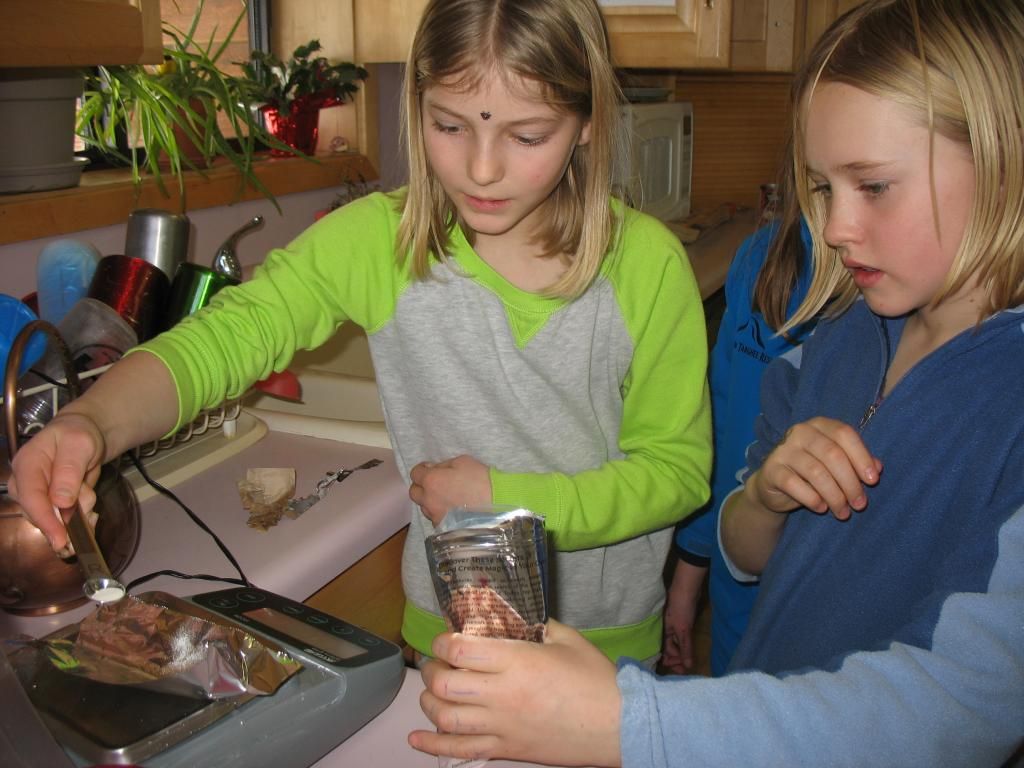 4
4 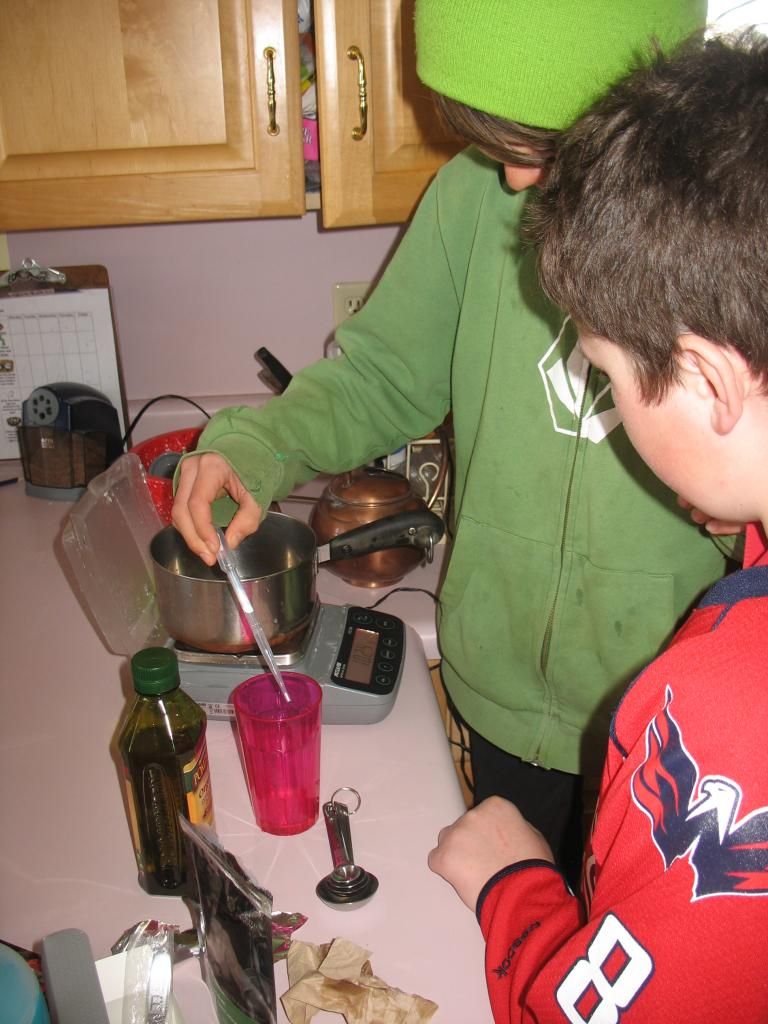
Photo explainations: 1- Owen experiment with how gases react when they are heated and cool. 2 - Students research different recipes for possible meals. 3 - Emma and Skylar measure Xanthan Gum to make olive oil jelly. 4 - Orion and Lon carefully measure water for the olive oil jelly recipe.
The next step of actualizing our project occurred when we created the outline for our project. Check out what we created:
Cooking Show Format
I. Host Introduction
A. Host introduces the overall concept of the cooking show
1. This will be written by groups to be given to whomever is the host
B. Host introduces the chefs
II. Chef Bios
A. As chefs pose, a narrator (possibly the host) reads the biographies of the chefs.
1. Pictures of the chef will also be flashed during the bio
2. These bios are fake – students need to write these ahead of time
III. Introduction to Judges
A. Host introduces Judges (will be adults)
IV. Host introduces the first round of cooking
A. Appetizers
B. Ingredients introduced
V. Cooking
A. Chefs begin cooking
B. Camera crew will shoot each person cooking separately to make sure they get all possible shots
C. Cooking will be spliced with chef interviews
1. Interviews will basically be shot after the cooking is finished
2. Narration of what happened while cooking
VI. Judging
A. Host will bring out each dish one at a time
1. As host brings dish out they will read a description of the dish to the judges.
a. description to be written by chef
B. Judges taste each dish
1. Judges comment on dish after tasting it
2. Rate dish on scale of 1-10
C. Grades of dishes aren’t announced to chefs
VII. Round 2 of cooking = dessert
A. repeat step V and VI
VIII. Judges announce best overall chef
This week students focused on basic principles of matter. Students were introduced to the idea that matter is composed of atoms and molecules that are attracted to each other in constant motion. Students explored the attractions and motion of atoms and molecules as they experimented with and observed the heating and cooling of solids, liquids, and gases.
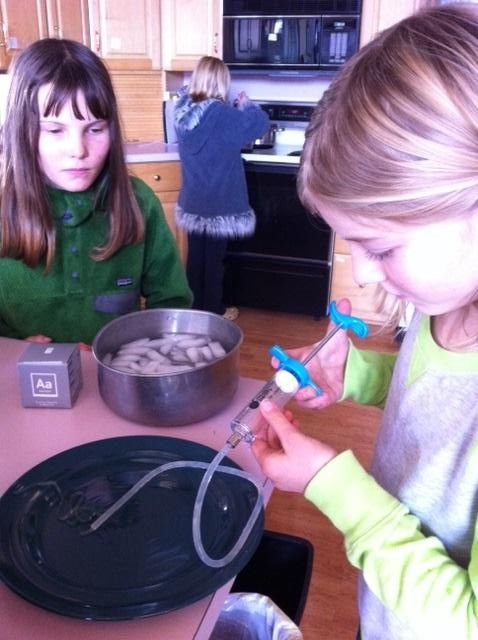
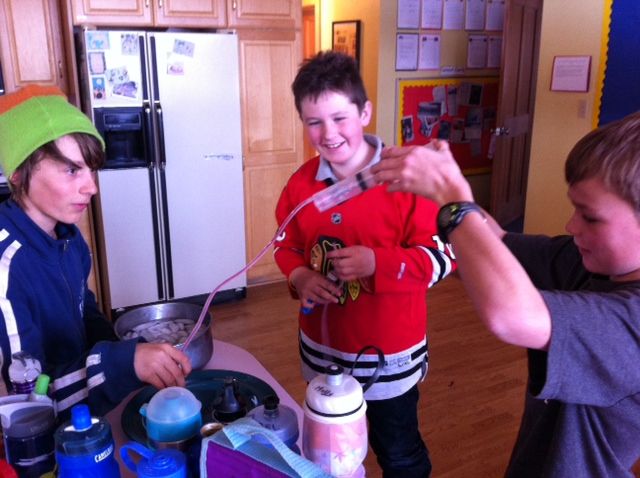
This week we finally got to play around with our molecular gastronomy kits. We learned about characteristics of polymers this week when using Agar to make gelatin, pomegranate noodles.
This week we solidfied what our molecular gastronomy project is going to look like!
We came up with our driving question and with inspiration from the cooking show Chopped, decided that we are going to create three episodes of our own version of Chopped but with recipes that focus on molecular gastronomy. Although we will keep a format similar to that of the popular cooking show, many aspects of our own show will be different. Here is how it will look:
Three to four people will be competing to cook the best meal that uses as many aspects of molecular gastronomy as possible (though we will make it look like they are using surprise ingredients, students will actually have their meals planned out ahead of time).
While cooking their meals, the people will be interviewed about the chemical processes happening while they are cooking (this is like the chef interviews that take place during the show asking chefs what they were thinking while cooking the meals).
Finally, the chefs will be graded by a host of guest judges on the taste of their food and how well they did explaining the chemistry behind the meals during their interviews.
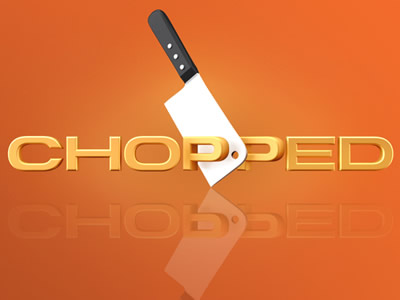
Mad Science
This week, students were given a challenge: Identify four mystery powders. That was it, no directions, no structure, some discussion, but little else. A casual observer in the classroom might have observed chaos - students breaking beakers, pouring different amounts of substances into jars, doing one experiment on one substance and another completely different one on a different substance with no comparables...

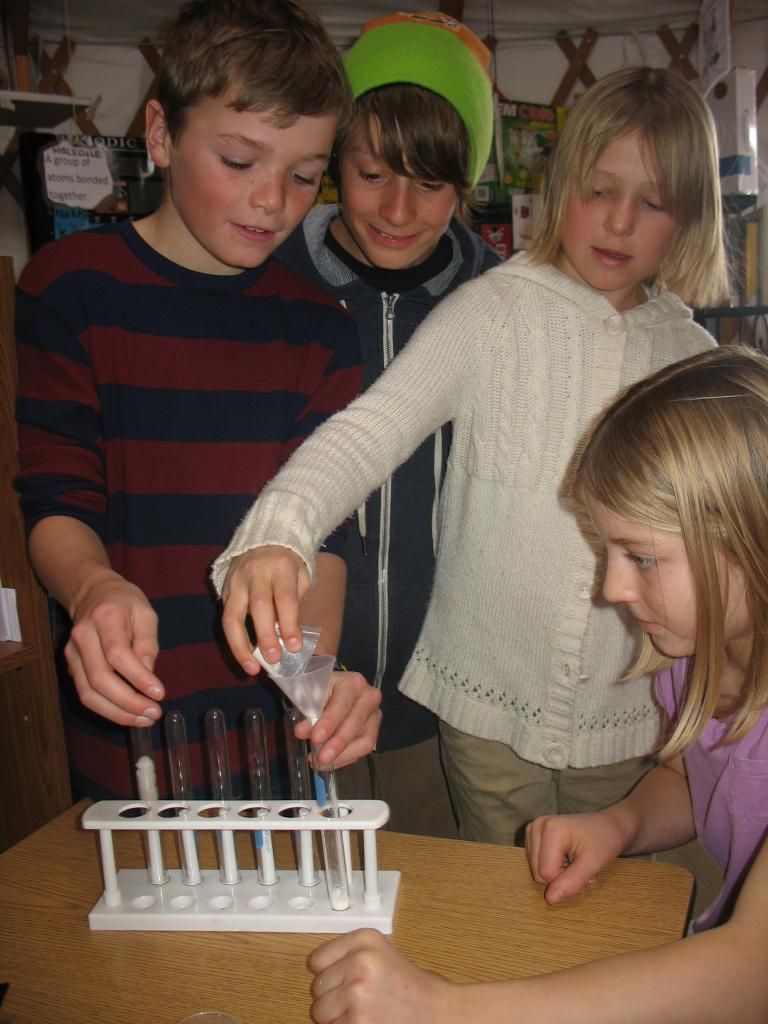
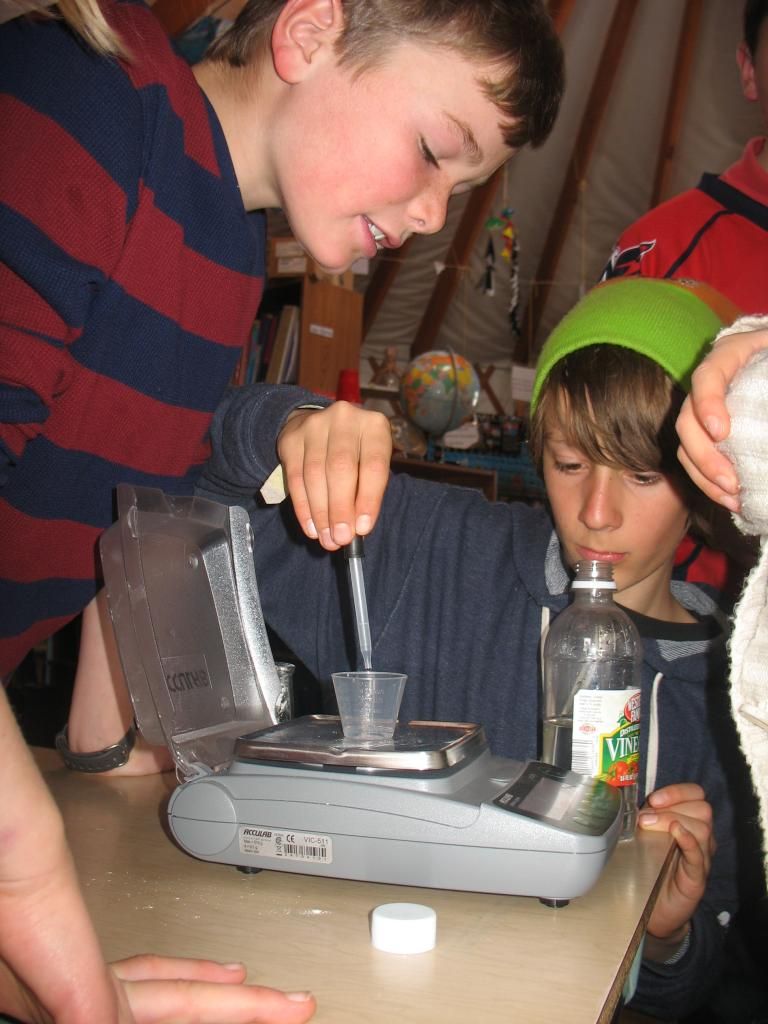
... but when the beaker broke, the class gasped, "Gaspppp!". And from that moment forward, I never again had to remind students of the importance of how to carry, where to place, or how to set down a glass beaker. When students realized that they couldn't prove anything about their substances at the end of an incongruous experiment, they said, "Ah, ha!" and made their own decisions to write step by step instructions that they would carefully follow the next time around. When one of the students dipped their finger in a power, sprinkling it everywhere, and put it in their mouth, I asked what would have happened if it was a toxic substance - a trip to the hospital?
Although identifying unknown substances is actually a very difficult task, the benign kitchen materials I gave the students this time around provided a great opportunity to 'test' students previous scientific understanding and their level of responsibility in a lab.
Due to some technical difficulties, we were not able to fully put together the Google Earth tour for the Gaper Guide Presentation this week.
So instead........
........ we started preparing for our next project!
We began by reviewing the criteria of a good question.
Students were then introduced to the basic ideas of chemistry and molecular gastronomy through videos and class discussion.
Finally, students came up with a list of essential questions (some of which are shown above) to help us zero in on what exactly we will be doing during this project.
Students unanimously agreed that before we can do much actual molecular gastronomy, we need to learn a little bit about chemistry. That meant that we began to define words, and do an experiment to help students understand the chemistry that fuels the art of changing food.
In their experiment this week, students learned about water molecules. They learned what they are made up of, how strong they are, and why the like each other so much!
